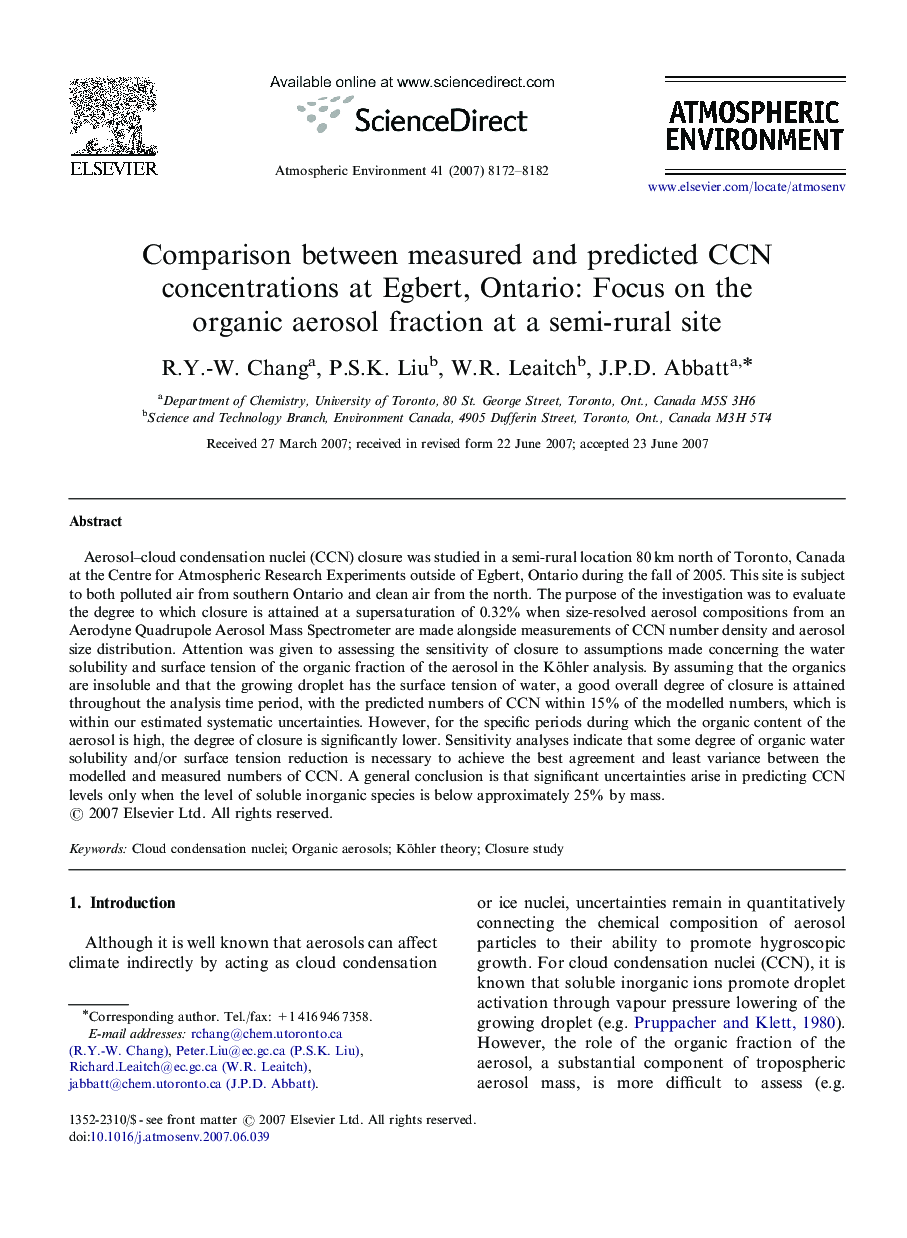| Article ID | Journal | Published Year | Pages | File Type |
|---|---|---|---|---|
| 4442971 | Atmospheric Environment | 2007 | 11 Pages |
Aerosol–cloud condensation nuclei (CCN) closure was studied in a semi-rural location 80 km north of Toronto, Canada at the Centre for Atmospheric Research Experiments outside of Egbert, Ontario during the fall of 2005. This site is subject to both polluted air from southern Ontario and clean air from the north. The purpose of the investigation was to evaluate the degree to which closure is attained at a supersaturation of 0.32% when size-resolved aerosol compositions from an Aerodyne Quadrupole Aerosol Mass Spectrometer are made alongside measurements of CCN number density and aerosol size distribution. Attention was given to assessing the sensitivity of closure to assumptions made concerning the water solubility and surface tension of the organic fraction of the aerosol in the Köhler analysis. By assuming that the organics are insoluble and that the growing droplet has the surface tension of water, a good overall degree of closure is attained throughout the analysis time period, with the predicted numbers of CCN within 15% of the modelled numbers, which is within our estimated systematic uncertainties. However, for the specific periods during which the organic content of the aerosol is high, the degree of closure is significantly lower. Sensitivity analyses indicate that some degree of organic water solubility and/or surface tension reduction is necessary to achieve the best agreement and least variance between the modelled and measured numbers of CCN. A general conclusion is that significant uncertainties arise in predicting CCN levels only when the level of soluble inorganic species is below approximately 25% by mass.
